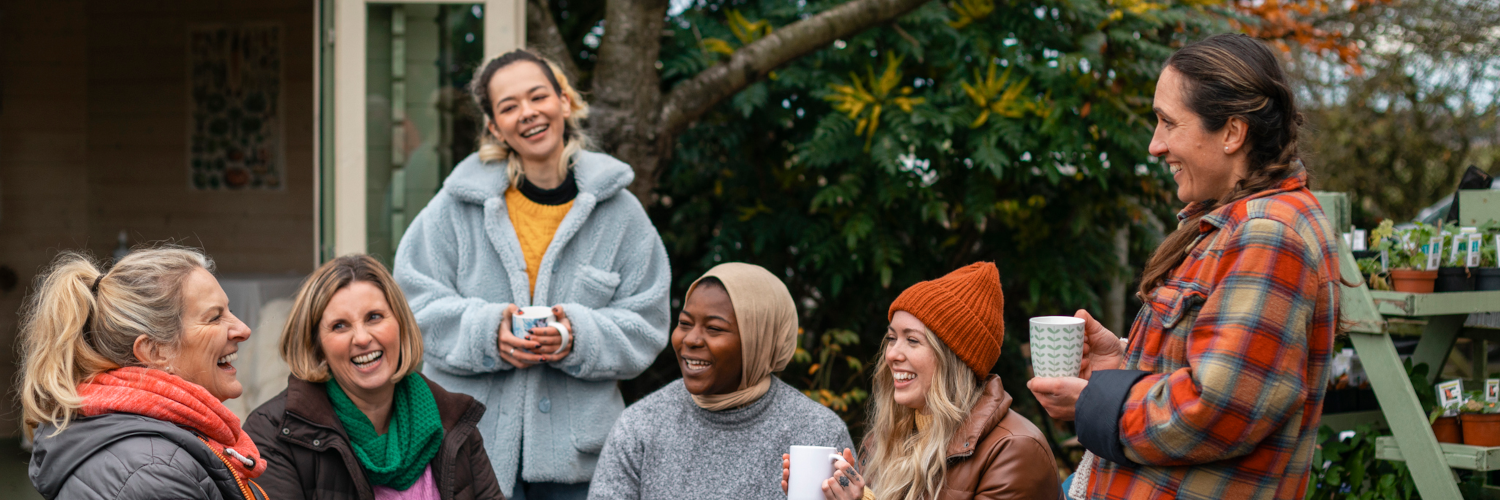Communities where everyone belongs
Explores what those working in adult social care can do to support individuals, organisations and communities to work towards creating ‘communities where everyone belongs’.
Introduction
This chapter explores definitions of ‘communities’, and how communities can have a positive impact on a person’s wellbeing. It sets out the barriers which can prevent people from feeling part of these communities, and looks at what those working in adult social care can do to support individuals, organisations and communities to work towards creating ‘communities where everyone belongs’.
What do we mean by communities?
And how can make sure that people aren’t excluded from communities as a result of physical or digital barriers? How can we support co-production in civic design to increase accessibility and reduce the need to retrofit and adapt community spaces?
When ‘communities’ are discussed, it is often in a narrow way. When thinking about ‘communities where everyone belongs’ we need to think both about physical and/or geographical communities (where people live, and may or may not have things in common) and ‘communities of interest’ (where, by definition, people share a wide variety of interests, worldviews, activism, culture, religion, and an almost infinite number of other permutations).
Physical access – being able to confidently use streets, get on and off public transport, have places to rest, and feel welcome in doing so – is a cornerstone of belonging in a geographical community. It is also very much about having the social model of disability at the heart of how communities are designed and maintained.
Find out more.
Digital technology – a collective term for electronic tools and devices which generate, process or store digitised information – and the internet has offered up numerous opportunities for communities of interest to join together when they are not physically close. It’s important that these are understood, and that barriers are removed to people being part of these.
The earlier that disabled people and/or anyone with any type of mobility issue can be part of civic design, the less need to retrofit and adapt later. This is not only an ethical thing to do – it’s cost and time-efficient, too.

Promoting and supporting communities
How can we promote and support community spaces and organisations that are accessible and inclusive? How has the cost-of-living crisis affected voluntary and community organisations?
There are a huge number of unused spaces in communities – for example, there are shuttered shops in high streets where pop-up services could locate. It’s important when thinking about communities to get creative when considering what people want to do, where they might want to do it, and how they might access these spaces.
Organisations that can start off as grassroots, and be cherished for their connections to their communities, can face challenges. Due to lack of funding, their work can be compromised or their very existence put at risk. They can also become managerial and professional in order to survive these challenging financial and bureaucratic climates.
When people have less money to spend, and feel more insecure in their work or home life, this is likely to have a knock-on effect in communities. For example, when someone’s income reduces, they may be less likely to buy extra items for local food banks, and may be less likely to volunteer, as they may need to work more hours.

Promoting communities
How can we empower and support communities to develop their own creative solutions? How can we support people to make better use of their community resources?
The language of ‘disruption’ is often frowned upon. Why? Disruption, in the sense of disrupting the expected way of doing things, is seen as positive in commercial spaces. It is only through disruption that change occurs.
The Communities Where Everyone Belongs group was often mystified by how so many services and hubs were still static and/or building-based. Why not move them around? Why not use empty or underused spaces in communities for advice and wellbeing support? Why not have mobility aid loan services at libraries? Why not try something totally different?
The word social implies community and relationships. Social care should embrace this aspect of its work, prioritising and celebrating work that fosters connection.


